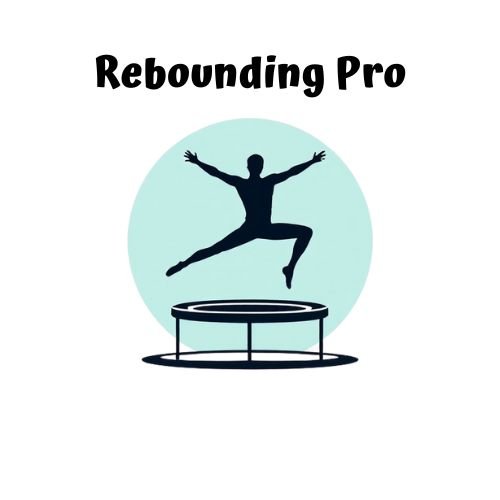Mini-workouts can dramatically improve your pelvic floor health in three key ways. First, short rebounding sessions on a mini-trampoline gently activate and strengthen your pelvic muscles with each bounce. Second, incorporating Kegels during brief, 2-minute exercise intervals enhances muscle engagement and recovery. Third, progressive mini-workouts of 5-10 minutes help build foundational strength without overtaxing your body. These quick, consistent sessions offer powerful healing benefits that build lasting pelvic resilience over time.
Short Rebounding Sessions Support Pelvic Recovery

While many pelvic floor exercises focus on traditional Kegels, rebounding offers a revitalizing alternative that delivers impressive results.
Just 10-15 minutes of gentle bouncing on a mini-trampoline can greatly improve circulation to your pelvic area, enhancing recovery and building strength through consistent pelvic floor muscle engagement.
Gentle rebounding activates your pelvic floor with each bounce, improving blood flow and strengthening muscles in just minutes a day.
You’ll find that these short rebounding sessions provide effective low-impact exercise that strengthens your pelvic floor without overtaxing it.
The rhythmic movement promotes muscle activation and coordination, essential for post-pregnancy or post-surgery recovery.
As a bonus, you’re getting cardiovascular exercise that builds pelvic floor muscle endurance over time.
Many women report decreased pelvic pain and reduced symptoms of pelvic floor dysfunction, including incontinence, as the bouncing motion helps release tension and retrain muscles.
Gentle Bouncing Techniques That Strengthen Without Strain
Five simple bouncing techniques can transform your pelvic floor routine without adding stress to already sensitive muscles.
Start with mini-trampoline exercises that provide low-impact workouts while engaging your pelvic floor muscles. Try gentle bouncing in two-minute intervals, focusing on maintaining proper posture throughout.
These gentle movements enhance blood flow to your pelvic area, accelerating muscle recovery and improving overall pelvic health. You’ll notice improved core stability and balance as you practice consistently, which further supports pelvic floor function.
The rhythmic nature of these exercises naturally activates your pelvic floor, making it easier to incorporate Kegel exercises simultaneously.
You don’t need extended sessions—short bursts of gentle bouncing throughout your day effectively strengthen these vital muscles while respecting your body’s limits.
Progressive Mini-Workouts for Long-Term Pelvic Floor Resilience

Building long-term pelvic floor resilience requires a thoughtful approach to progressive exercise.
Start with foundation exercises like Kegels, squats, and bridge poses, gradually increasing intensity as your pelvic floor muscles strengthen.
Begin with 5-10 minute mini-workouts, eventually working up to 15-20 minutes as your endurance improves.
Consistency matters more than intensity—aim for at least three sessions weekly to prevent incontinence and pelvic organ prolapse.
Track your progress by noting improvements in muscle control and endurance.
These measurable gains will motivate you to maintain your routine.
For truly personalized guidance, consult with a healthcare professional or pelvic floor physical therapist who can tailor exercises to your specific needs.
Frequently Asked Questions
How to Improve Pelvic Floor Quickly?
You’ll improve your pelvic floor quickly by practicing Kegel exercises daily, adding squats and bridge poses to your routine, and using Kegel balls for resistance. Consistent 5-10 minute sessions produce results within 6-8 weeks.
What Is the Best Exercise to Strengthen the Pelvic Floor?
Kegel exercises are your best option for strengthening pelvic floor muscles. You’ll want to contract these muscles for 3-5 seconds, then release. Aim for three sets of 10-15 repetitions daily for ideal results.
How Can I Heal My Pelvic Floor?
To heal your pelvic floor, perform daily Kegel exercises, incorporate bridges and squats into your routine, and stay consistent. You’ll notice improvements within 6-8 weeks. Consider biofeedback techniques for better muscle activation guidance.
How Can I Rebuild My Pelvic Floor?
To rebuild your pelvic floor, practice Kegel exercises daily, incorporate bridges and squats, and consider using tools like Kegel balls. You’ll see improvements within 6-8 weeks with consistent effort. Consult a pelvic floor specialist for personalized guidance.
In Summary
You don’t need to spend hours exercising to rebuild your pelvic floor. Quick rebounding sessions, gentle bouncing techniques, and progressive mini-workouts give you effective, manageable options that fit into your busy day. By committing to these short but consistent practices, you’ll strengthen critical muscles without overtraining. Start small, stay consistent, and you’ll discover your pelvic floor becoming more resilient with each mini-workout you complete.





Leave a Reply